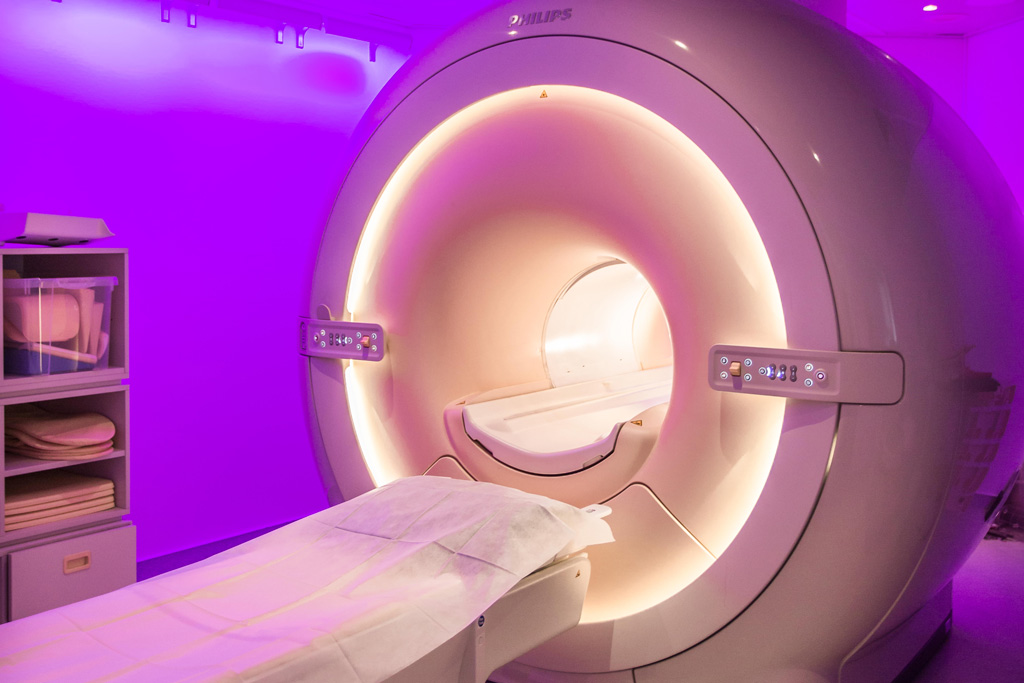Magnetic resonance imaging is one of the most advanced medical imaging techniques. It allows a thorough examination of the body and helps to identify neurological, cardiac, digestive, gynecological and osteoarticular problems. MRI does not use X-rays, but a magnetic field generated by a powerful magnet. The examination is painless, but some precautions should be taken, especially for patients with certain medical devices such as pacemakers or insulin pumps. This is why a questionnaire precedes the examination.

Correct preparation for the examination
This examination is forbidden for wearers of a cardiac pacemaker (except in special cases) and certain metal implants. We must be notified in all cases. A questionnaire will be provided for you to complete upon your arrival. It is essential to report any cardiac device (pacemaker) or valve, or element containing iron. Systematically, you must remove all jewellery and metal objects such as magnetic credit cards, hairpins, clips, hearing aids, and removable dental appliances, etc … A single-use gown will be provided to allow you to take off your clothes (regardless of the area to be examined).
- Abdominal examination: Do not eat 6 hours before the examination.
- Brain examination: No make-up.
- Breast examination: Between the 2nd and 3rd week of the cycle.
- Other: No special preparation.
- Cardiac: According to protocol.
Conduct of the examination
You will be lying on a table sliding towards the centre of a small tunnel that is open at both ends. The part of your body being examined shall be in the middle of the tunnel. The device emits a magnetic field with radio-frequencies that transform the alignment of the hydrogen atoms contained in your body. This technique leads to the construction of an image.
The medical team remains nearby to the room and communicates through a microphone. It is important that you remain as still as possible during this examination which lasts for approximately 20 to 45 minutes.
This examination may seem quite long, and even noisy. Ear plugs or a headset will be provided to reduce the noise. You will be surrounded by a soothing colourful light atmosphere (Ambilight system) with the ability to listen to the music of your choice.
In some cases, an intravenous injection of gadolinium-based contrast medium will be used to aid diagnosis if needed.
Implications
This examination is by no means painful. It may seem long and uncomfortable due to the noise produced. For people prone to claustrophobia, our medical team uses relaxation techniques. In more extreme cases, we can provide light sedation to limit the adverse effects of this kind of discomfort.
The administration of the venous contrast, which is sometimes necessary, is painless and generally well tolerated. The Gadolinium injected may nevertheless, in rare cases, cause allergies so it is imperative that the patient has previously reported their history.
Results
At the end of the examination, our doctor will be available for a comment that shall not be of diagnostic value. This will be evaluated by the doctor in charge of your records in our centre then transmitted to your prescribing doctor. After a short waiting time you can leave with your images and a CD of your examination (printing and recording time).
